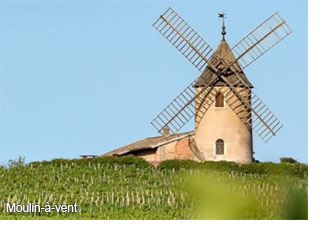Louis Boillot, Lafarge-Vial, Desvignes, Antoine Sunier
It was a shock last November, after a week spent tasting barrel samples of 2020 Burgundy, to visit the city of Lyon and see bottled wine from 2021 on sale in the shops. On the third Thursday of each November, French bars and wine shops fill with notices announcing le Beaujolais Nouveau est arrivé! It seems churlish to criticize something the French clearly take such delight in, but when speed is the only consideration in winemaking (with only two or three months between harvest and consumption), the resulting wines are inevitably going to be on the shallow, simple side; Beaujolais Nouveau mostly inhabits a narrow flavour spectrum between banana and bubblegum.
Cru Beaujolais is something altogether different. The steep, hilly villages that form the core of the region have some fantastic, old-vine terroirs that can make wine as complex and ageworthy as any made anywhere; these wines are a world away from the thinner examples (and the nouveau) produced on the plain below. While Beaujolais has its own Gamay grape, tasting cru Beaujolais you very much sense the wines are on a continuum between two of France’s great regions: Burgundy (to the north) and the northern Rhone (to the south). Sometimes you find the swooning cherry and flower aromatics of Pinot Noir, and sometimes the fire and herb of Syrah.
Moulin-à-Vent is spectacularly dominated by its hilltop windmill, visible from miles away. Burgundian Louis Boillot was not looking to expand outside the Côte d’Or, but when he saw the quality of old-vine terroir available in Beaujolais, he found it ‘irresistible’; he told me he chose Moulin-à-Vent over any other Beaujolais village because the terroirs here are closer to those of the Côte d’Or. Louis is not the only Burgundian to be tempted by the terroirs here. Frédéric Lafarge has established Domaine Lafarge-Vial in the charming, dramatic village of Fleurie. The wines are vinified back in Volnay, but Frédéric was keen to tell me the fruit here demands a different approach; he vinifies his Fleurie with 30% whole cluster, which brings a more expressive, aromatic style.
Morgon is looked down on by the old volcanic cone of the Côte de Py, and it is on the slopes of the Côte de Py that Desvignes have their best vines. Siblings Emmanuelle and Benoît Desvignes are the eighth generation of their family to be making wine at this highly-regarded estate. Very much in the idiom their family have always worked in, they make concentrated wines with a reputation for graceful longevity. Beaujolais is also a magnet for dynamic youngsters with no vines to their name, but an ambition to work in wine: Antoine Sunier is one of the region’s best new talents. He has made his home in the high, westerly cru of Régnié and he makes an explosively aromatic, 100% whole bunch wine from two old vine terroirs. /NT
Offered subject to remaining unsold; for shipment Spring 2022



